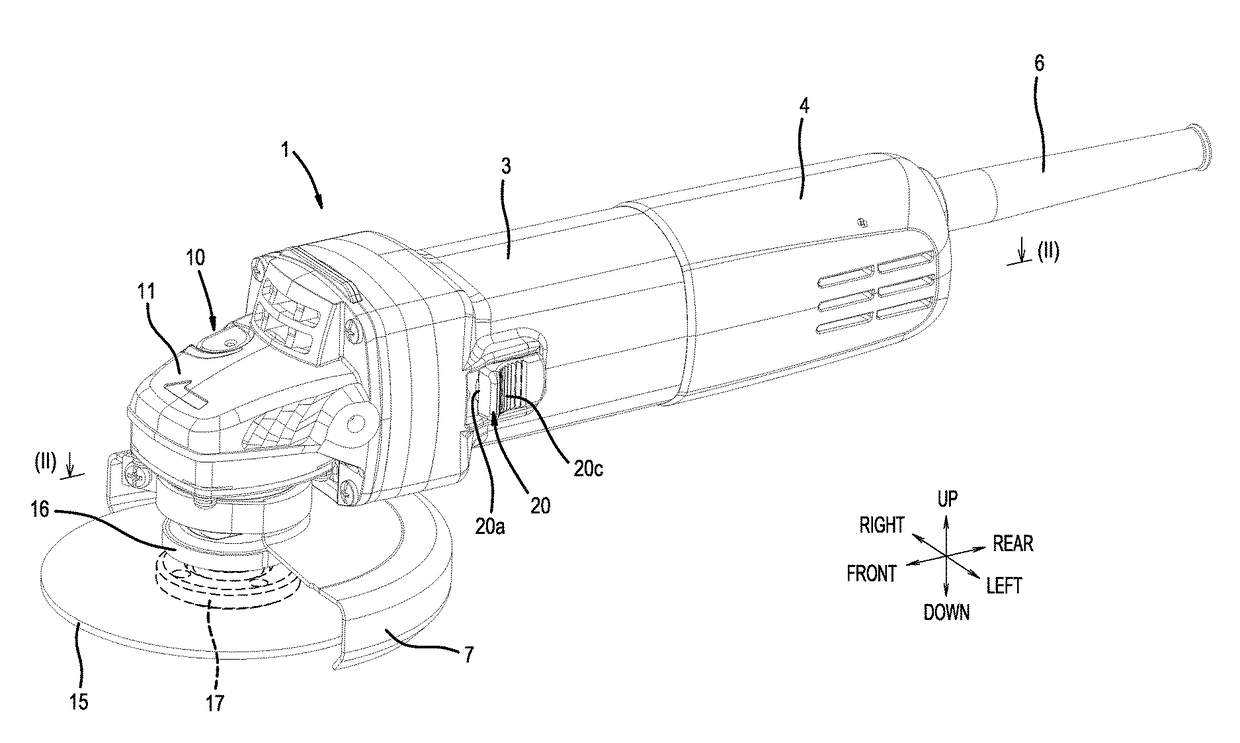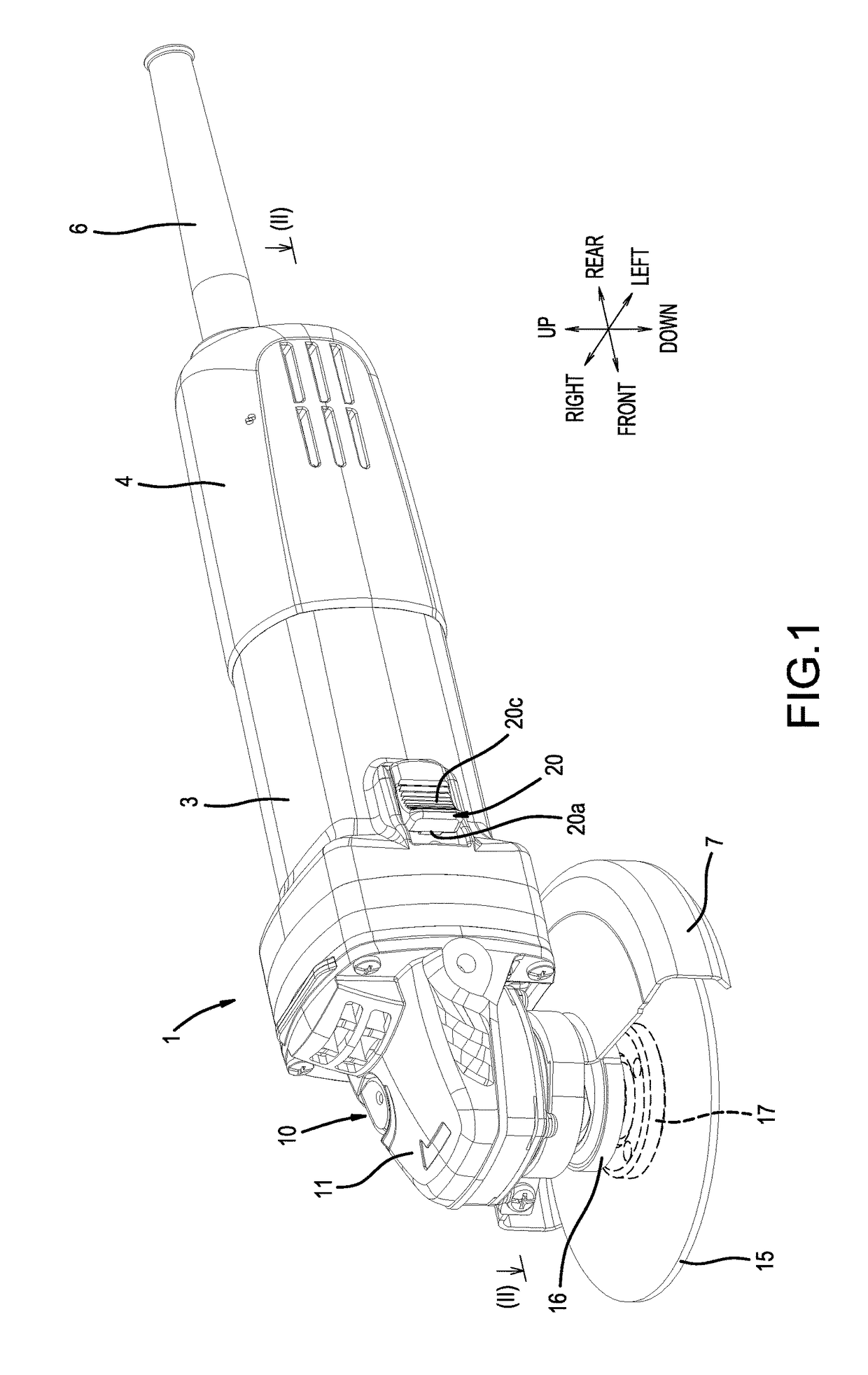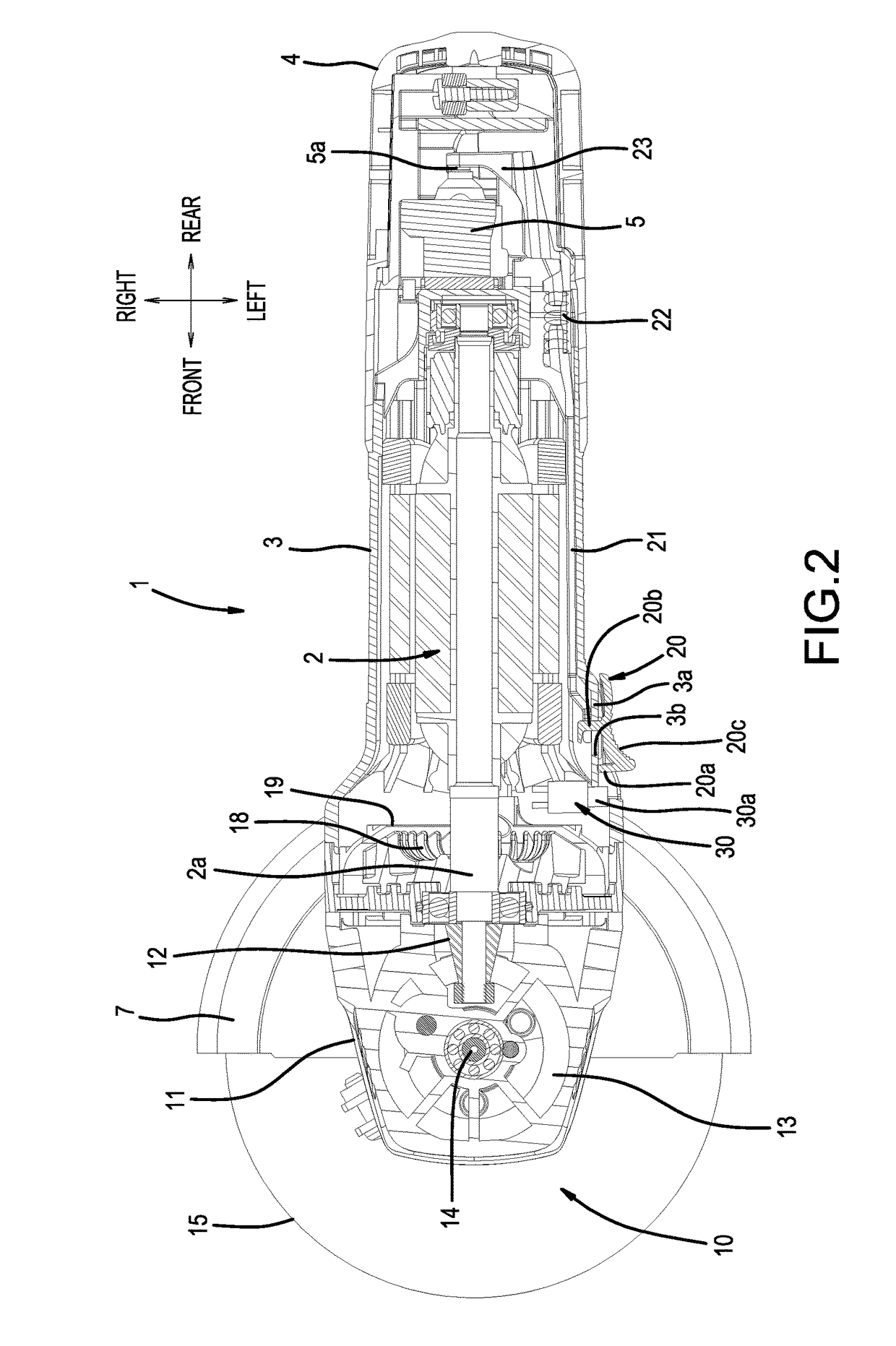Power tool
a technology of power tools and tools, applied in the field of power tools, can solve the problems of increasing size and cost, increasing the complexity of the motor control, etc., and achieve the effect of reducing cost and simplifying the structure of the lock-on mechanism
- Summary
- Abstract
- Description
- Claims
- Application Information
AI Technical Summary
Benefits of technology
Problems solved by technology
Method used
Image
Examples
first embodiment
[0032]Next, embodiments of the present disclosure will be explained with reference to FIGS. 1 to 17, in which a disc grinder will be utilized as one representative, non-limiting example of a power tool 1 according to the present teachings. FIGS. 1-5 show a power tool 1 according to a In the first exemplary power tool 1, an electric motor 2, which serves as a drive source, is built into (mounted or disposed within) a main-body housing 3. The main-body housing 3 has a substantially cylindrical shape of a size that is easy to grip by a user. The user grips the main-body housing 3 and is positioned (stands) rearward (the right side in FIG. 1 and FIG. 2) of the power tool 1. Hereinbelow, the front, rear, left, and right directions of members, structural elements, and the like are denoted with reference to a user holding the power tool 1 in a normal operating state.
[0033]A rear-part case 4 is joined to a rear part of the main-body housing 3. A switch main body (power switch) 5 is housed ...
second embodiment
[0057]The second embodiment thus also has a configuration in which, when the supply of electric power is cut off, the lock-ON state of the start switch 20 is released (disabled) by the movement of the actuation pin 40a of the electromagnetic actuator 40. Therefore, the controller for motor control can be simplified and made more compact as compared with the configuration in which the lock-ON state is electrically released in the actuation control of the electric motor, as in the above-described known example.
[0058]In addition, when the power-supply cord 6 is pulled out of the power-supply outlet after usage of the power tool 1 has concluded, the actuation pin 40a of the electromagnetic actuator 40 will be held in the pushed out (advanced) state (i.e. it is maintained in the pushed out or advanced position). Therefore, the engaging part 41a of the intermediate lever 41 remains at the front side of the end part of the support-pedestal part 3a. Consequently, the start switch 20 cannot ...
third embodiment
[0063] a configuration is again adopted in which the lock-ON state of the start switch 20 is released (disabled) by the electromagnetic actuator (50), and therefore the controller for motor control can be simplified and made more compact as compared with the above-described known configuration in which the lock-ON state is electronically released in the actuation control of the electric motor.
[0064]In addition, according to the third embodiment as well, when the supply of electric power is cut off (interrupted), the start switch 20 cannot be pushed into the lock-ON position. Therefore, even if some other member (structure) or a person interferes with (accidentally pushes) the start switch 20 when the power tool 1 is not being used for workpiece processing (e.g., during storage), the start switch 20 can not be put (intentionally or unintentionally) into the lock-ON state. Consequently, the power tool 1 will not inadvertently start when the supply of electric power is subsequently con...
PUM
 Login to View More
Login to View More Abstract
Description
Claims
Application Information
 Login to View More
Login to View More - R&D
- Intellectual Property
- Life Sciences
- Materials
- Tech Scout
- Unparalleled Data Quality
- Higher Quality Content
- 60% Fewer Hallucinations
Browse by: Latest US Patents, China's latest patents, Technical Efficacy Thesaurus, Application Domain, Technology Topic, Popular Technical Reports.
© 2025 PatSnap. All rights reserved.Legal|Privacy policy|Modern Slavery Act Transparency Statement|Sitemap|About US| Contact US: help@patsnap.com



